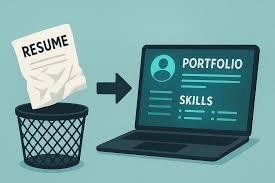
Beyond the Checklist: Writing Job Descriptions That Attract Top Talent
Your Job Description Is a Sales Pitch. Is It Selling Your Company?
For too long, job descriptions have been treated as a simple checklist of requirements. A list of duties, a few mandatory skills, and a line or two about the company’s mission. But in today's fiercely competitive talent market, that approach isn't just outdated—it’s a missed opportunity. Your job description is not a passive document; it’s a living, breathing advertisement for your company. It’s the first impression you make on a potential employee, and if it’s not compelling, you’re losing out on top talent before they even apply.
Think about it: when you buy a product, you don’t just read a list of its features. You read about its benefits, how it will solve your problem, and how it will improve your life. Why should hiring be any different? Your job description needs to sell the job, the team, and the company culture. This blog post will guide you through transforming your job descriptions from dull duty lists into powerful sales pitches that attract the best and brightest.
Myth #1: The Job Description Is for Internal Use
The biggest mistake companies make is treating the job description as an internal document. They simply copy and paste from an old template, listing tasks and qualifications as if they're speaking to someone who already works there. But your audience is external. They don't know your acronyms, your internal processes, or your unspoken culture. They are a curious, skeptical consumer who needs to be convinced that your opportunity is worth their time and energy.
The Reality: Your job description is a marketing tool. It needs to be written with the same care and intention as an ad for a product or a service. Every sentence should be designed to answer the candidate’s unspoken question: “What’s in it for me?”
Step 1: Craft a Compelling Title
Forget generic titles like "Senior Software Engineer." Be specific and exciting. If the role is about leading a team to build a new AI product, the title should reflect that. Think "Lead AI Product Engineer" or "Head of Growth for AI." A compelling title can immediately grab attention and signal that this isn't just another routine job.
Step 2: The Pitch: Hook Them with the Why
Instead of starting with a list of responsibilities, begin with a powerful, one-paragraph pitch that sells the opportunity.
-
The Mission: What is your company's core mission? What problem are you solving for the world?
-
The Impact: How will this specific role contribute to that mission? Don’t just say the person will "manage a budget." Say they will "play a pivotal role in allocating resources to fuel our next phase of innovation."
-
The Team: Who will this person be working with? Highlight the team’s expertise, their collaborative spirit, and the exciting challenges they're tackling.
This opening paragraph should inspire a candidate and make them feel like they're being invited to join a movement, not just a company.
Step 3: Shift from Duties to Impact
A traditional job description lists duties: "manage social media accounts," "write copy," "run reports." These are tasks. What top talent wants to know is the impact they’ll have.
-
Before: "Manage social media accounts and respond to comments."
-
After: "Own our social media presence, building a vibrant community and driving meaningful engagement with our audience. Your work will directly shape our brand's voice and reach millions."
This reframing turns a chore into a challenge and a duty into a source of pride. For every responsibility, ask yourself: "What is the desired outcome or impact of this task?"
Step 4: Go Beyond the Basics: Sell Your Culture
This is where you differentiate your company from the competition. What is it truly like to work there? Don't just say you have a "great culture." Show it.
-
Core Values in Action: If one of your values is "curiosity," the job description could mention that the company encourages taking a full day each quarter to work on a passion project.
-
Growth and Development: Instead of a generic "professional development opportunities," be specific. Mention a budget for certifications, a mentorship program, or a clear career path to a senior role.
-
Work-Life Integration: Go beyond saying "competitive pay." Mention flexible work hours, remote work options, or a company-wide policy to avoid meetings on Fridays. These details paint a picture of a company that values its employees' well-being.
-
Diversity and Inclusion: Make it clear that your company is committed to building a diverse team. Use inclusive language, and maybe even state your company’s DEI philosophy. This signals a welcoming environment.
Step 5: The Call to Action
Just like a good sales pitch, a job description needs a clear call to action. Tell them exactly what to do next and what to expect from the hiring process.
-
Set Expectations: Explain the hiring process: "The process will involve a phone screen with our recruiter, a technical interview, and a final conversation with the Head of Product."
-
Use a Compelling Closer: End with an enthusiastic summary that reiterates the value proposition. "If you're ready to make a significant impact on our mission and join a team that's building the future, we can't wait to hear from you."
In the end, your job description is a direct reflection of your company. It’s a chance to tell a compelling story about your mission, your team, and the incredible opportunity that awaits a talented candidate. By treating your job descriptions like the powerful sales tools they are, you’ll not only attract more qualified applicants—you’ll attract the right applicants who are excited to be a part of your journey.
FAQs on Job Descriptions
1. How do I make my job descriptions more appealing without making them sound unrealistic?
The key is authenticity. Don't promise a "rockstar" environment if your company is more traditional. The goal isn't to create a fantasy, but to accurately and compellingly sell the reality of working for your company. Focus on the genuine mission and real opportunities for impact and growth.
2. Should a job description include a salary range?
Yes, whenever possible. Including a salary range is a sign of transparency and respect for the candidate's time. It helps weed out unqualified candidates and ensures you're attracting talent that aligns with your budget. While some companies are hesitant to share salary data, the trend is moving toward greater transparency.
3. What is the most important section of a job description?
While all sections are important, the opening pitch and the "Impact" section are the most critical. Candidates will often scan these first to decide if the job is even worth reading. If you don't hook them with a powerful "why" and a clear picture of the impact they'll have, they'll likely move on to the next opportunity.




